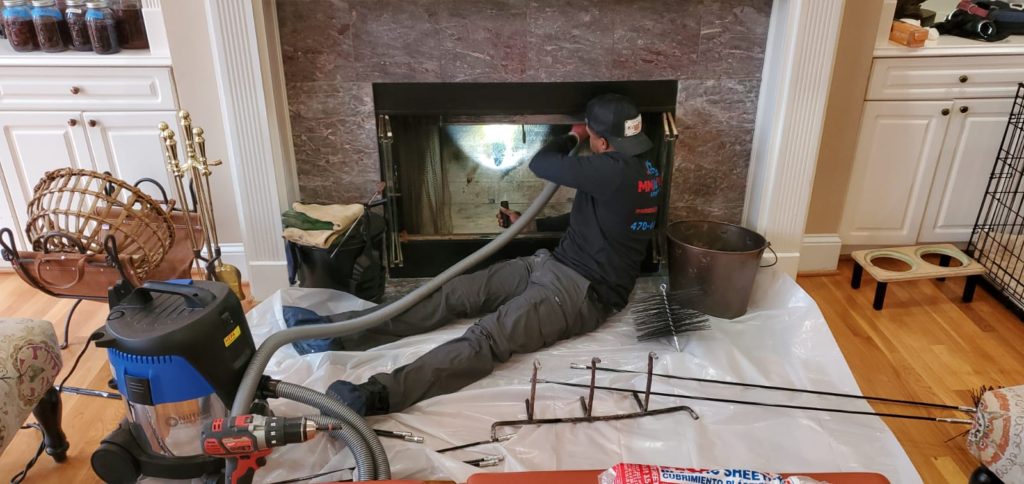Mastering the Art of Chimney Sweep San Jose: Best Practices Revealed
Mastering the Art of Chimney Sweep San Jose: Best Practices Revealed
Blog Article
The Ultimate Smokeshaft Cleansing List for Homeowners
Guaranteeing the safety and efficiency of your chimney is a critical obligation for house owners that count on their fire place or wood stove for heat during the colder months. A properly maintained chimney not just improves the overall performance of your heater however likewise mitigates the threat of prospective hazards such as fires and carbon monoxide gas leaks. With a comprehensive list in hand, homeowners can methodically deal with essential upkeep tasks that are crucial for a clean and secure smokeshaft. From checking the smokeshaft structure to removing creosote accumulation, each step plays a crucial role in securing your home and enjoyed ones.
Chimney Examination and Assessment
When carrying out a smokeshaft inspection and evaluation, it is crucial to completely check out the exterior and interior elements for indications of damages or buildup. The interior of the chimney must be looked for any kind of obstructions, such as bird nests or excess soot, which can position a fire risk. Checking the flue for creosote build-up is crucial as this extremely flammable compound can spark and create a chimney fire. Additionally, analyzing the condition of the smokeshaft lining is essential to make sure correct air flow and safety.

Outside Upkeep and Fixes
Inspecting the outside of the smokeshaft for any architectural issues, such as fractures, loosened blocks, or indicators of water damages, is important in making certain the total safety and durability of the chimney. With time, direct exposure to varying climate condition can create damage on the chimney's exterior, potentially causing even more significant issues otherwise dealt with immediately. On a regular basis checking for any type of cracks in the mortar or blocks can aid avoid water from leaking in and triggering damage to the chimney structure. Loose bricks must be repositioned and secured to keep the honesty of the smokeshaft. In addition, any kind of indicators of water damages, such as discoloration or mold growth, need to be examined and repaired to prevent further degeneration. Attending to these exterior click here to read maintenance issues in a timely manner can lengthen the life of your smokeshaft and stop expensive repair services down the line. Positive repair work and routine assessments are crucial to maintaining your smokeshaft in ideal condition.
Cleaning Up the Smokeshaft Flue and Damper
To make sure proper working and safety and security of your smokeshaft, routine cleansing of the chimney flue and damper is necessary. The chimney flue is the passage that permits smoke and gases to exit your home, while the damper is a movable plate that manages air movement. Begin by inspecting the flue for any type of blockages such as bird nests, debris, or creosote accumulation. Make use of a flashlight to check for any type of indicators of damages or blockages. Next, carefully eliminate any type of particles using a chimney brush or vacuum created for this objective. Guarantee that the damper opens up and shuts smoothly, as an appropriately operating damper helps control air movement and prevents drafts when the chimney is not being used. Additionally, think about mounting a smokeshaft cap to prevent debris and animals from getting in the flue. Normal upkeep of the chimney flue and damper not only improves the effectiveness of your chimney however additionally decreases the danger of chimney fires and carbon monoxide accumulation in your house.
Removing Creosote Buildup Safely
How can home owners safely remove creosote accumulation from their chimney to keep its optimal performance and safety? Creosote, a result of burning timber, can collect in smokeshafts over time, posturing a fire threat if not correctly taken care of.
There are different approaches to remove creosote, depending upon the accumulation's seriousness. For light creosote accumulation, using a chimney brush or a homemade creosote eliminator made of equal components water and vinegar can be effective (Chimney Sweep San Jose). For thicker deposits, expert smokeshaft cleansing solutions might be required
It's important to wear safety gear such as handwear covers, goggles, and a mask when managing creosote to avoid skin inflammation or breathing. In addition, proper air flow while cleansing the chimney is vital to avoid breathing in damaging fumes. Routine smokeshaft examinations and cleanings can assist stop creosote build-up, ensuring the safety and effectiveness of your smokeshaft.
Fire Safety And Security Preventative Measures for Smokeshaft Owners
Normal chimney evaluations by certified professionals are essential More Help to recognize any type of blockages, creosote build-up, or architectural issues that might posture a fire risk. Setting up a chimney cap can prevent particles, pets, and rain from getting in the smokeshaft and causing clogs or damages. Furthermore, chimney owners should have a trigger arrestor or smokeshaft spark arrester installed to like it protect against triggers from getting away and potentially sparking nearby combustibles.

Conclusion
By following the utmost smokeshaft cleansing list outlined in this short article, home owners can evaluate, clean, and fix their chimney successfully. Correct upkeep not only minimizes the threat of chimney fires however likewise lengthens the life expectancy of the chimney system.
Checking the chimney cap and crown for any damage is vital to stop water from seeping right into the chimney and causing further damage.
Regular maintenance of the chimney flue and damper not just boosts the performance of your smokeshaft but likewise lowers the risk of smokeshaft fires and carbon monoxide accumulation in your home.
Regular smokeshaft examinations and cleansings can aid stop creosote accumulation, ensuring the security and effectiveness of your smokeshaft. (Chimney Sweep San Jose)
Setting up a smokeshaft cap can avoid particles, pets, and rainwater from getting in the chimney and creating obstructions or damages. Correct upkeep not only lowers the risk of smokeshaft fires yet additionally prolongs the lifespan of the smokeshaft system.
Report this page